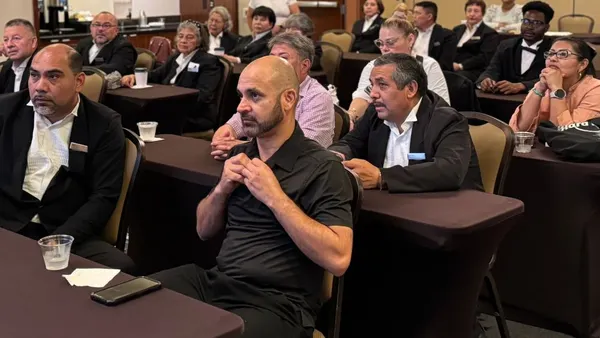Misty Chally is CEO of Capitol Solutions, LLC, and the executive director of the Critical Labor Coalition, a nonprofit organization dedicated to finding solutions to the U.S. labor shortage.
Despite consistently low unemployment numbers, the United States is grappling with a severe labor shortage that is impacting industries across the board. From hotels and restaurants to grocery and manufacturing industries, employers are struggling to find workers to fill essential roles, stunting economic growth and disrupting supply chains.
As of now, there are more than 8 million job openings in the U.S. but only 6.5 million unemployed individuals.
In this unstable economic climate, it’s imperative to explore effective measures to encourage workforce participation. There are a number of policy prescriptions that can help reverse this shortage but one, updating the Work Opportunity Tax Credit, offers a viable solution by incentivizing employers to hire individuals from targeted groups who face significant barriers to employment.
WOTC is a federal tax credit created in 1997 available to employers who hire individuals from specific groups that have traditionally found it difficult to secure employment. These groups include recipients of Supplemental Nutrition Assistance Program benefits, long-term unemployed individuals, disabled veterans and those on Temporary Assistance for Needy Families, among others. WOTC helps offset a portion of wage costs, making it more financially feasible for businesses to hire and retain employees.
Despite its potential, WOTC has remained unchanged since its inception 27 years ago. The maximum credit, which stands at 40% of qualified wages up to $6,000 (resulting in a maximum credit of $2,400 in most cases), has not kept pace with wage inflation and the rising costs associated with recruiting and supporting these employees. As a result, the effectiveness of WOTC in achieving its intended purpose has been significantly undermined.
To revitalize WOTC and enhance its impact, it is crucial to adjust the credit to reflect current economic realities. To that end, Rep. Lloyd Smucker, R-Pa., has introduced a strong bipartisan initiative, the Improve and Enhance the Work Opportunity Tax Credit Act, which increases the basic credit to reflect today’s economy and adds an additional credit for employees who work at least 400 hours.
Under this bill, WOTC would offer a two-tiered benefit. For employees who work up to 400 hours, the credit amount would increase to 50% of qualifying wages up to the current $6,000 limit, effectively increasing the maximum basic credit to $3,000. An additional credit would be given to those who employ individuals working beyond 400 hours, providing an incentive for employers to retain workers for longer periods. This additional credit would apply to all targeted groups except summer youth, in alignment with existing special rules.
Consider the case of Lindsey, a SNAP recipient hired in 2024 at a rate of $15 per hour who works 1,000 hours. Under current law, Lindsey's employer would receive a tax credit of $2,400. With the proposed changes, the credit would increase to $6,000 — $3,000 from the basic credit and an additional $3,000 for the extended hours worked. This substantial increase not only makes hiring from targeted groups more attractive but also promotes longer-term employment, benefiting both employees and employers.
By making it more financially advantageous for businesses to hire individuals from targeted groups, we can bring more people into the workforce, reducing unemployment rates among the most vulnerable populations. Additionally, encouraging longer-term employment fosters job stability and allows employees to build skills and experience, further enhancing their employability.
Moreover, improving WOTC aligns with broader economic goals. Increasing workforce participation boosts consumer spending, drives economic growth and enhances productivity. It also helps reduce the strain on public assistance programs by enabling more individuals to become self-sufficient through stable employment.
The current labor shortage presents a unique bipartisan opportunity to rethink and strengthen our approach to workforce development. Enhancing WOTC is a strategic move that addresses immediate labor market needs while supporting long-term economic stability. It’s time for policymakers to recognize the potential of this tax credit and make the necessary adjustments to ensure it effectively serves both employers and job seekers in today’s economy.










